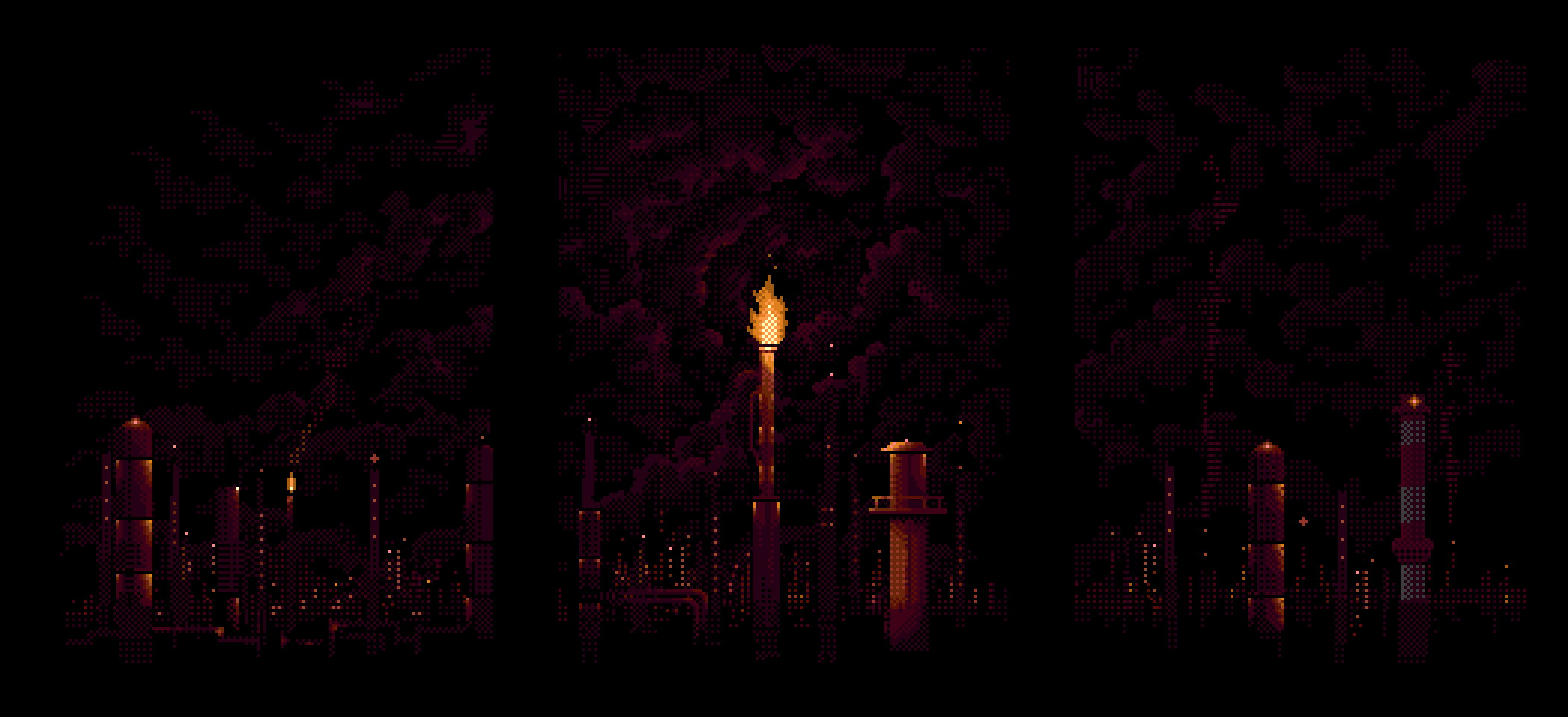
Cc: 2
Fall 2020

Cover image by Yutsi
addictions
(of the anthropocene)
Where were you on the day earth's atmosphere reached the emissions milestone of 400 parts per million (ppm)?
In March 1958, infrared gas analyzers recorded an atmospheric carbon dioxide concentration equal to 313 parts per million (ppm). As I write this letter, Mauna Loa Observatory registers 412.34 ppm. The steady climb from 313 to nearly 413 ppm is embodied by the Keeling Curve, a sixty-year graph that depicts the incremental growth of global carbon emissions.
To be fair, there has always been CO2 in the atmosphere. Ice-core data from the Late Quaternary Period (800,000 years ago) up to the late 18th century shows cyclical peaks and troughs, natural fluctuations in atmospheric carbon. But then an uptick in anthropogenic activity associated with the First Industrial Revolution—namely the extraction and burning of coal—stimulated the rise in global emissions. This was only accelerated by the next industrial revolution, characterized by anthropogenic hyperactivity, which has yet to be curbed in this century. Because modernity is defined by the comforts and efficiencies ensured by the modern fuel sources associated with the Second Industrial Revolution (viz. electricity, gas, oil), society has developed an intractable dependency on substances that are demonstrably harmful. Since the late 1700s, the Keeling Curve has gotten precipitously steeper with no trough in sight.
It is an addiction enabled by oil supermajors, fracking contractors, energy lobbyists, and politicians from energy-producing states, bad actors who are all too happy to point the finger at energy consumers, encouraging them to fight off their own addiction: turn off the lights, bike to work, eat less meat. Considering there are one hundred CEOs whose companies are responsible for 71% of global emissions, the argument seems a tad disingenuous, more like ho hum victim blaming than a pathway toward sustainability.
So long as this metaphor of addiction is on our mind, let's consider how, recently, Big Pharma began accepting responsibility for the opioid epidemic. There is a clear narrative: 1) opioids are causing harm; 2) here is who is responsible. It is easy to connect the Sackler Family to the labs of Purdue Pharma where the opioids are synthesized, and to the local pharmacies that release the drugs into the communities of rural New England and Appalachia. This is all to say it is easy to connect the Sackler Family with the Doonan Family who recently lost a son and daughter to opioid abuse. How hard would it be to make these same connections between the climate culprits and their victims?
The connections are not as specious as the Fossil Fuels Lobby would have you believe, but they're also not easy connections to make. There are also scientific and narrative problems in play.
Climatologists are trying to change that. According to an article in Scientific American, "extreme event attribution not only is possible, but is one of the most rapidly expanding subfields of climate science." This attribution science is how "science could potentially influence the public's ability to blame greenhouse gas emitters for the damages caused by climate-related events." Until then, we will be made to feel that we are the cause and cure for our own addictions.
In The Great Derangement, Amitav Ghosh explains why we are more likely to tell stories about the fall of the Berlin Wall or the collapse of the Twin Towers—and not the calving of the Larsen B ice shelf. Modernity's appetite for individual moral adventure primes us to ask questions like “Where were you when JFK was assassinated?” But, really, who cares. A presidential death elicits mourning, conspiracy, memorabilia, but it is not viscous enough to touch our daily lives. So when Ghosh asked, in 2016, “Will it ever be possible to ask, in the same vein, ‘Where were you at 400 ppm?'," the question answered itself. No, not unless you have eiditic memory.
Digital breadcrumbs provide a semblance of what that day—May 9, 2013—looked like for me. My email inbox shows a receipt for my electronic thesis, a cli-fi novel set in Southern Bangladesh; an electronic boarding pass for a carbon-emitting flight to Myanmar; and an email to my mom about the tropical cyclone growing in the Bay of Bengal. One might say I imagined, created, and feared the climate more that day than usual, and yet, I had no clue I was standing beneath an atmosphere that, for the first time in millions of years, contained 0.04% carbon dioxide. According to the Yale School of the Environment, in May 2013, 0.04% represented the annual maximum; in 2015, 0.04% was an annual average; and by 2016, 0.04% was an annual minimum. Since then, the curve has continued climbing , in tandem with our tolerance for greenhouse gases.
This issue of Carbon Copy, "Addictions (of the Anthropocene)," includes a poet and a pumpjack, a trucker's Bakken shale diary, a frequent flyer's reckoning with the aviation industry, a writer kneeling before the altar of microplastic waste, an anti-natalist/anti-capitalist/anti-democracy manifesto, and the artwork of an 8-bit video game designer who brings to apocalyptic life his hometown of Norco, Louisiana (portmanteau of New Orleans Refining Company). There are also cross-disciplinary conversations featuring degrowth/ecological economists, geographers, planners, and climate specialists. From a coal cart in the bordertown of Gallup, New Mexico to the Oslo Architecture Triennale in Norway, this issue explores our complicity in and defenses against the addictions of the Anthropocene.
—Lawrence Lenhart
Flagstaff, AZ, 2020
